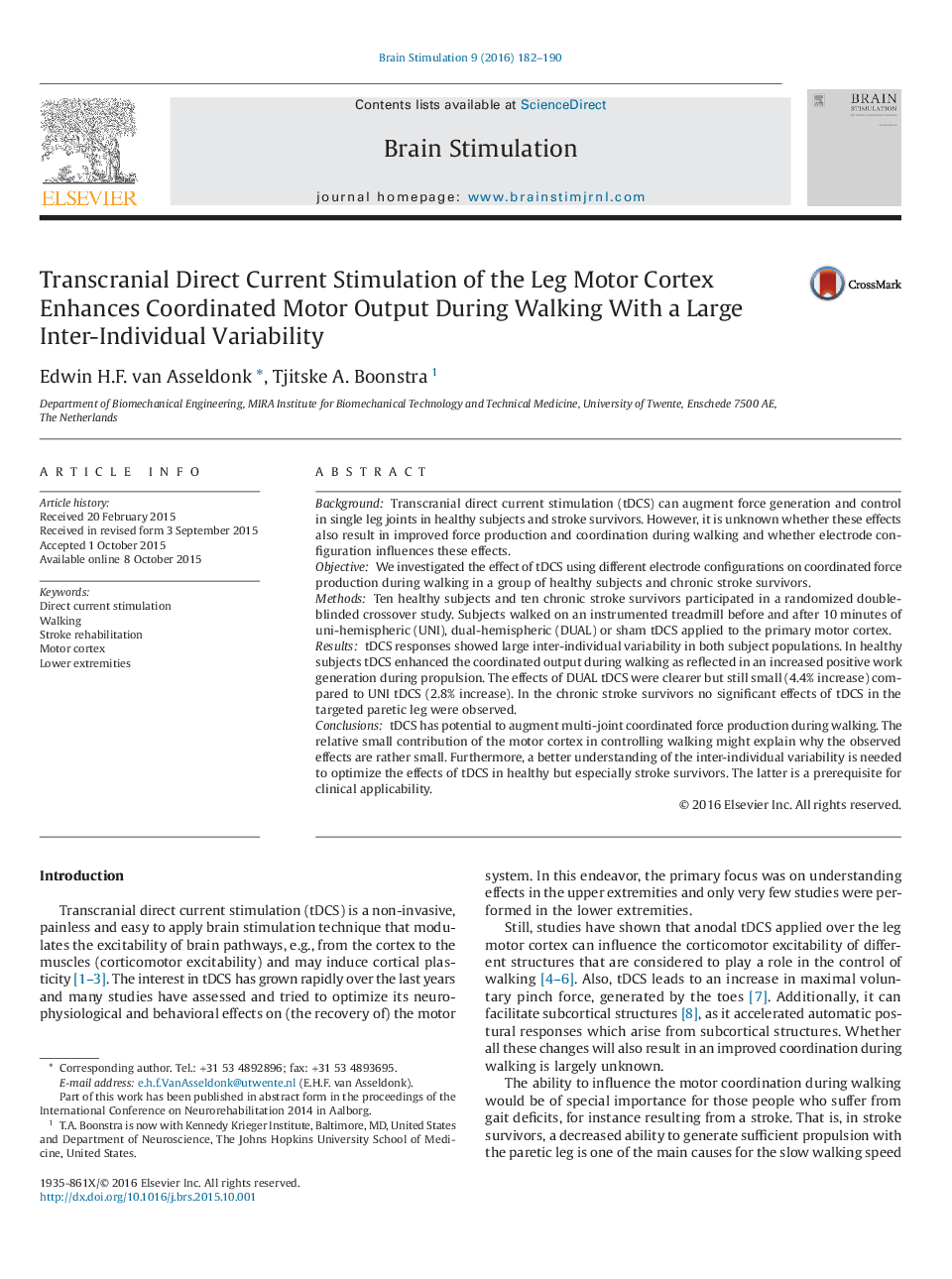| کد مقاله | کد نشریه | سال انتشار | مقاله انگلیسی | نسخه تمام متن |
|---|---|---|---|---|
| 6005773 | 1184670 | 2016 | 9 صفحه PDF | دانلود رایگان |
- tDCS can enhance the coordinated motor output during walking in healthy subjects but effects are small.
- There is large inter-individual variability in response to tDCS.
- Dual-hemispheric tDCS tends to have a larger effect on the coordinated motor output than uni-hemispheric tDCS.
- tDCS did not result in improved coordinated motor output in the paretic leg of chronic stroke survivors.
BackgroundTranscranial direct current stimulation (tDCS) can augment force generation and control in single leg joints in healthy subjects and stroke survivors. However, it is unknown whether these effects also result in improved force production and coordination during walking and whether electrode configuration influences these effects.ObjectiveWe investigated the effect of tDCS using different electrode configurations on coordinated force production during walking in a group of healthy subjects and chronic stroke survivors.MethodsTen healthy subjects and ten chronic stroke survivors participated in a randomized double-blinded crossover study. Subjects walked on an instrumented treadmill before and after 10âminutes of uni-hemispheric (UNI), dual-hemispheric (DUAL) or sham tDCS applied to the primary motor cortex.ResultstDCS responses showed large inter-individual variability in both subject populations. In healthy subjects tDCS enhanced the coordinated output during walking as reflected in an increased positive work generation during propulsion. The effects of DUAL tDCS were clearer but still small (4.4% increase) compared to UNI tDCS (2.8% increase). In the chronic stroke survivors no significant effects of tDCS in the targeted paretic leg were observed.ConclusionstDCS has potential to augment multi-joint coordinated force production during walking. The relative small contribution of the motor cortex in controlling walking might explain why the observed effects are rather small. Furthermore, a better understanding of the inter-individual variability is needed to optimize the effects of tDCS in healthy but especially stroke survivors. The latter is a prerequisite for clinical applicability.
Journal: Brain Stimulation - Volume 9, Issue 2, MarchâApril 2016, Pages 182-190
